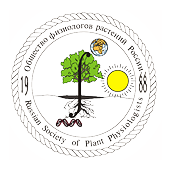Новости науки и практики // Ноябрь 2016

How a fungus inhibits the immune system of plants
The researchers identified a protein with which the fungus suppresses
the immune defense of the populated plants. So it makes sure that it
is not attacked like disease-inducing fungi and the relationship can
succeed in the long run.
https://www.eurekalert.org/
The gene of autumn colors
Researchers have found Mendel's Stay-Green gene encodes an enzyme that
extracts magnesium from chlorophyll, adding clarity to understanding
how the pigment degrades.
https://www.sciencedaily.com/
Study reveals which genes are critical to a plant's response to drought
Because plants cannot relocate when resources become scarce, they need
to efficiently regulate their growth by responding to environmental
cues. Drought is the most important cause of reduced plant growth and
crop yield, which makes insights into a plant's drought response
highly valuable to agriculture. A new study has provided major
insights into how plants cope with water-limiting conditions, which
can direct advanced breeding and genome engineering efforts to create
high-performing, drought-tolerant crop plants.
https://www.sciencedaily.com/
The houseplant with a blueprint for improving energy harvesting
For many people, nanotechnology belongs in the realm of science
fiction. Researchers have solved the mystery of the blue sheen on the
leaves of some begonias and have found that their chloroplasts have
evolved a nanoscale light-trapping structure to help them survive in
the darkness of the forest floor.
https://www.sciencedaily.com/
What the ancient carbon dioxide record may mean for future climate change
Scientists have reconstructed the ancient atmospheric carbon dioxide
(CO2) record from about 300 million years ago. Their study reveals
previously unknown fluctuations of atmospheric CO2 at levels projected
for current century, they say. It also highlights the potential impact
the loss of tropical forests can have on climate.
https://www.sciencedaily.com/
Measuring the forces of biology
Biology, at the nitty-gritty level of motor proteins, DNA, and
microtubules, takes its cue from physics. But while much is known
about the biological components that form such cellular structures,
researchers are only beginning to explore the physical forces between
those components.
https://www.sciencedaily.com/
Ancient proteins shown to control plant growth
An international team of life scientists reports the discovery of
mechanisms regulating plant growth that could provide new insights
into how the mammalian biological clock affects human health.
https://www.sciencedaily.com/
Ultrastructure of a condensed chromosome-like structure in a cyanobacterium
Eukaryotic cells, including human cells, form paired condensed
chromosomes before cell division. The paired chromosomes are then
equally divided into the daughter cells. Prokaryotic cells, including
bacteria, do not have such a DNA distribution system. Researchers have
discovered that the photosynthetic cyanobacterium Synechococcus
elongates shows eukaryotic condensed chromosome-like DNA compaction
prior to cell division and were able to reveal details of the
transiently formed structure.
https://www.sciencedaily.com/
Discovery of carbon storage signaling mechanism in algae offers new
potential for sustainable biofuel production
Algae with altered intracellular signaling have increased oil yields,
report scientists. This finding may represent a way to make algae
better oil producers without sacrificing growth.
https://www.sciencedaily.com/
How plants make friends with fungi
Many fungi damage or even kill plants. But there are also
plant-friendly fungi: Most land plants live in close community with
arbuscular mycorrhiza fungi (AM fungi) that stimulate their growth.
Researchers have studied the development of this symbiosis and have
identified a gene that is specifically activated by AM fungi and
influences the development of the plant root: The GRAS transcription
factor MIG1 stimulates growth of more and larger root cortex cells.
https://www.sciencedaily.com/
Rockcress for heavy-metal clean up
Rockcress of the Arabidopsis halleri species is known to possess the
capability of settling on hostile, heavy metal-contaminated soil. It
stores extraordinary high concentrations of certain toxic heavy metals
in its leaves: a rare property. Researchers have analyzed approx.
2,000 specimens of this species from 165 locations throughout Europe.
In this process, they identified overwhelming diversity that has
arisen among plants of the same species over the course of evolution.
Their findings help explore plants’ enormous potential for future
technologies; in this case, they aid the detoxification of soil and
the extraction of metals that are of economic interest.
https://www.sciencedaily.com/
Plant discovered that neither photosynthesizes nor blooms
A new species of plant has been discovered on the subtropical Japanese
island of Kuroshima (located off the southern coast of Kyushu in
Kagoshima prefecture) and named it Gastrodia kuroshimensis. The new
flowering plant species is a very rare event as the flora of this
region have been thoroughly investigated. However, G. kuroshimensis
was a particularly special discovery because it is both completely
mycoheterophic, deriving its nutrition not from photosynthesis but
from host fungi, and completely cleistogamous, producing flowers that
never bloom.
https://www.sciencedaily.com/
Mutant plants reveal temperature sensor
In a serendipitous moment, scientists studying light sensing molecules
in plants have discovered that they are also temperature sensors. The
discovery may eventually allow them to design crop varieties that are
better able to cope with a warming world.
https://www.sciencedaily.com/
Plant 'thermometer' discovered that triggers springtime budding by
measuring night-time heat
Botanists have discovered the 'thermometer' molecule that enables
plants to develop according to seasonal temperature changes.
https://www.sciencedaily.com/
Scientists show how plants turn a 'light switch' on and off
Scientists have uncovered the mechanisms through which cryptochrome 2
-- a key photoreceptor that allows plants to respond to blue light --
is switched on and off, allowing plants to remain responsive to light.
https://www.sciencedaily.com/
Scientists trace plant hormone pathway back 450 million years
Scientists got a glimpse into more than 450 million years of evolution
by tracing the function of a hormone pathway that has been passed
along and co-opted by new species since the first plants came onto
land.
https://www.sciencedaily.com/
Химический скрининг растений ускорили в тысячу раз
Российско-германская группа биотехнологов разработала методику
ускоренного скрининга химических веществ, которые стимулируют или
подавляют рост растения.
https://naked-science.ru/
Потерю вкуса у томатов при охлаждении связали с метилированием ДНК
Международная группа ученых пришла к выводу, что потеря вкуса у
томатов при низких температурах связана с эпигенетическими изменениями
в ДНК. Результаты работы опубликованы в журнале PNAS.
https://naked-science.ru/
Exogenous glutathione improves high root-zone temperature tolerance by
modulating photosynthesis, antioxidant and osmolytes systems in
cucumber seedlings
To investigate the physiological responses of plants to high root-zone
temperature (HT, 35 °C) stress mitigated by exogenous glutathione
(GSH), cucumber (Cucumis sativus L.) seedlings were exposed to HT with
or without GSH treatment for 4 days and following with 4 days of
recovery. Plant physiological variables, growth, and gene expression
related to antioxidant enzymes and Calvin cycle were quantified. The
results showed that HT significantly decreased GSH content, the ratio
of reduced to oxidized glutathione (GSH/GSSG), chlorophyll content,
photosynthesis and related gene expression, shoot height, stem
diameter, as well as dry weight.
http://www.nature.com/
Bioinformatic Identification and Analysis of Hydroxyproline-Rich
Glycoproteins in Populus trichocarpa
A bioinformatics approach is employed here to identify and classify
AGPs, EXTs, PRPs, chimeric HRGPs, and hybrid HRGPs from the proteins
predicted by the completed genome sequence of poplar (Populus
trichocarpa).
https://bmcplantbiol.
AtSWEET13 and AtSWEET14 regulate gibberellin-mediated physiological processes
We provide evidence that Arabidopsis SWEET proteins, AtSWEET13 and
AtSWEET14, which are members of a family that had previously been
linked to sugar transport, are able to mediate cellular GA uptake when
expressed in yeast and oocytes. A double sweet13 sweet14 mutant has a
defect in anther dehiscence and this phenotype can be reversed by
exogenous GA treatment.
http://www.nature.com/
Dissection of brassinosteroid-regulated proteins in rice embryos
during germination by quantitative proteomics
In the present study, we used isobaric tags for relative and absolute
quantification (iTRAQ) based proteomic approach to study BR-regulated
proteome during the early stage of seed germination. The results
showed that more than 800 BR-responsive proteins were identified,
including 88 reliable target proteins responsive to stimuli of both
BR-deficiency and BR-insensitivity.
http://www.nature.com/
Nitric oxide participates in plant flowering repression by ascorbate
In Oncidium, redox homeostasis involved in flowering is mainly due to
ascorbic acid (AsA). Here, we discovered that Oncidium floral
repression is caused by an increase in AsA-mediated NO levels, which
is directed by the enzymatic activities of nitrate reductase (NaR) and
nitrite reducatase (NiR).
http://www.nature.com/
Asymmetrical root development as a reaction to abiotic stresses
Roots can develop resilience and protective barriers to drought and
cadmium-induced (Cd) stress. Líška et al.study the ways in which the
vascular tissues of roots develop characteristics to mitigate the
effects of local abiotic stressors.
https://aobblog.com/2016/10/
A scorched leaf policy? A mangrove tree uses oxidative stress against
an insect pest
One major pest of mangrove forests in China is a leaf-mining insect,
which burrows into the upper layer of the leaf. Insect attack not only
causes physical damage, but also causes the accumulation of reactive
oxygen species (highly reactive forms of oxygen that can damage
enzymes and DNA) which can cause further damage to plant tissue. We
might then expect that trees would increase their ability to
neutralize reactive oxygen species when under insect attack.
https://aobblog.com/2016/10/
Effectiveness of cuticular transpiration barriers in a desert plant at
controlling water loss at high temperatures
Maintaining the integrity of the cuticular transpiration barrier even
at elevated temperatures is of vital importance for hot-desert plants.
In a new study published in AoB PLANTS, Schuster et al. investigated
the effect of temperature on the leaf cuticular permeability of Rhazya
stricta, an evergreen shrub from the Arabian Desert. Permeability
increased 2.4-fold from 15° to 50° C, which is much less than in all
other species studied so far.
https://aobblog.com/2016/10/
Новости
Новости науки и практики // Июль 2024
Обзор научных новостей, опубликованных во всемирной паутине за последний месяцНовости науки и практики // Июнь 2024
Обзор научных новостей, опубликованных во всемирной паутине за последний месяцНовости науки и практики // Май 2024
Обзор научных новостей, опубликованных во всемирной паутине за последний месяц


Объявления
Записей не найдено.



